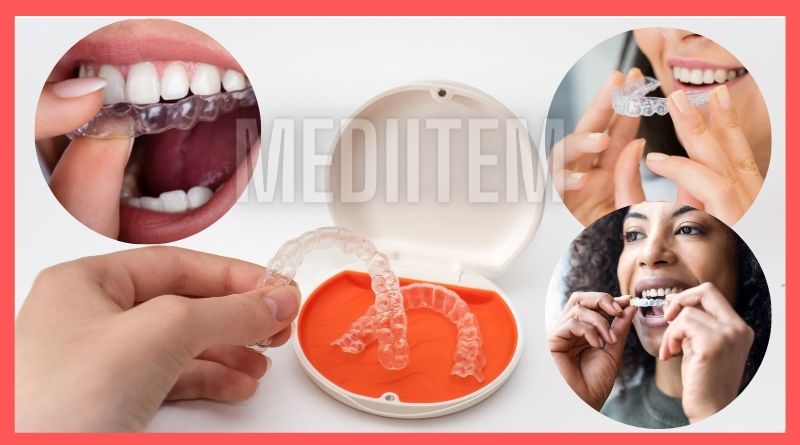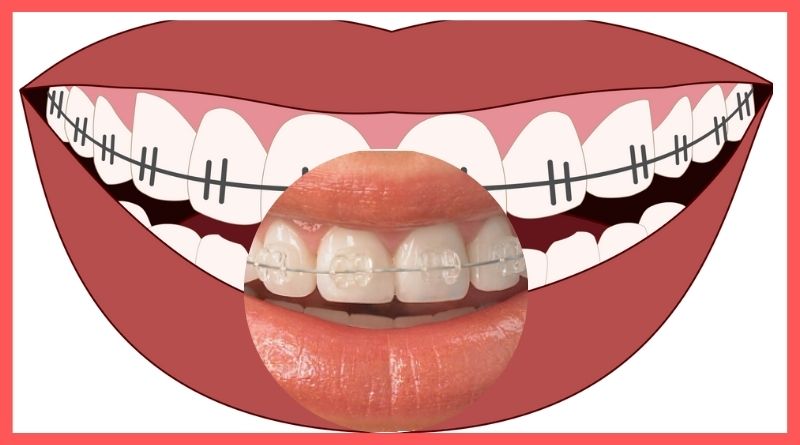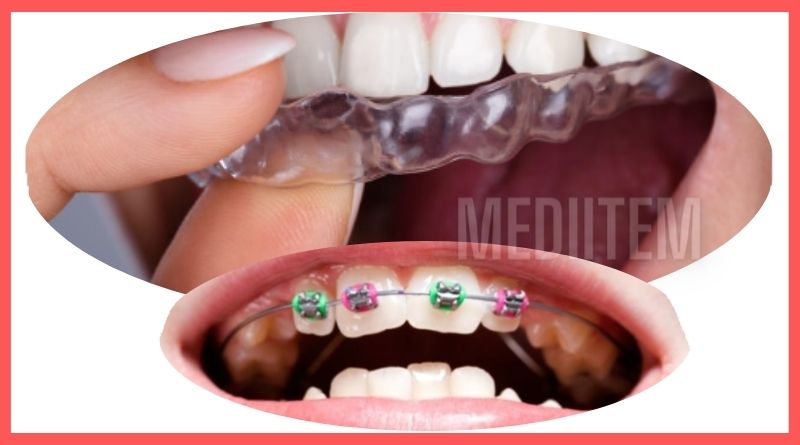Bacterial plaque on teeth is probably one of the terms you have heard most frequently due to the problems it can cause. And it is no wonder since it is one of the most common causes of cavities. If they are not treated properly they can become a very harmful problem for the health of our mouth, even causing gingivitis and periodontitis.
It is mainly due to the combination of food debris and saliva, which accumulate little by little between the teeth and gums, generally 2 to 12 hours after brushing.
It can be easily seen since its color is a yellowish tone, which stands out between the teeth.
Since dental plaque, as we mentioned previously, favors the accumulation of bacteria in our oral cavity, it is extremely important to pay attention to it since it is considered the most frequent cause of the appearance of periodontal diseases and cavities; These last two are the most prevalent oral problems today.
What is bacterial plaque on teeth?
Bacterial plaque on teeth is a yellowish layer with a soft gelatinous texture formed by the accumulation of microorganisms; bacteria and sugars, from the digestive flora. These microorganisms form a bacterial mass that adheres to the teeth, tongue, and gums.
It is one of the main causes of the most common oral diseases such as cavities, gingivitis, periodontitis, and halitosis… Therefore, its accumulation must be avoided by carrying out correct daily oral hygiene. In addition to rinsing your mouth, you must brush your teeth well. and use dental floss to clean interdental spaces.
What does plaque on teeth look like
Bacterial plaque is initially invisible, but if adequate hygiene is not carried out to prevent the proliferation of bacteria, it thickens and when it comes into contact with calcium salts from food remains and saliva itself, the plaque spreads. It calcifies and forms tartar, also known as dental calculus, which puts our mouth at risk as it causes periodontal diseases.
Furthermore, with the accumulation of tartar, the teeth acquire a yellowish tone, especially in the area near the gums, which gives our mouth a dirty appearance.
Once tartar forms on our teeth, it is very difficult to remove it with a simple brush at home, which is why it is necessary to go to a specialized dentist to perform a professional oral cleaning to eliminate it effectively.
Why should bacterial plaque be controlled?
Controlling plaque should not be taken as a joke. We must be very serious about this issue because if it is not done in due time, a series of diseases can be created that could even lead to the loss of teeth.
Next, we are going to present a few examples:
Gingivitis:
The accumulation of plaque and tartar can cause the appearance of gingivitis. The gum swells, turns red, and may bleed. It is a clear symptom that dental hygiene is not adequate.
Periodontitis:
To all the symptoms described in the previous section, we would now add bone loss, resulting in the loss of one or more teeth. Poor dental hygiene, genetic predisposition, or alcohol and tobacco consumption would be the most common reasons.
Cavities:
These bacteria that accumulate on the teeth and are not eliminated with a brush and floss produce acids that wear down the surface of the tooth until they cause cavities. It is possible that it does not hurt and that is why we do not realize it. This is when visiting the dentist regularly would be the most effective prevention tool.
Halitosis or bad breath:
Suffering from halitosis is an oral problem closely linked to the accumulation of bacterial plaque. Because the bacteria have joined the salivary proteins, generating a bad breath odor.
How is it eliminated or controlled of bacterial plaque on teeth?
Indeed, we cannot prevent plaque from accumulating, but it can be removed if we maintain good oral hygiene routines. Brush your teeth after each meal, with a paste that contains fluoride in its formula, and thus give strength to the teeth and help prevent the appearance of cavities.
Studies show that stimulating the salivary glands causes saliva to dissolve bacteria that may have stuck to the teeth. Rinsing your mouth with water after eating is also a way to cause increased saliva.
How does dental bacterial plaque originate?
It must be made clear that we can all suffer from bacterial plaque since the bacteria originate in our mouths. These bacteria feed on our diet and saliva. As the acids are created, they adhere to the teeth, destroying the tooth enamel and then the well-known and feared cavities appear.
Emphasize that, if this plaque is not removed adequately, the gums become irritated and inflamed around the teeth and can lead to gingivitis or periodontal diseases. In addition to losing teeth permanently.
Types of bacterial plaque according to their location
Where does plaque accumulate in your mouth? The involvement of tissues or certain teeth will depend on this.
*Marginal plaque: This is the plaque that accumulates on the tooth surface.
*Coronal plaque: located in areas of stagnation, such as the gingival margin.
*Subgingival plaque: affects the pits of the gingival sulcus and the periodontal pockets.
As you can see, the location of the plaque defines the affected oral structure and the type of condition that the patient may suffer. Don’t wait, prevention is better than cure.
Types of bacterial plaque on teeth according to their composition
Depending on the type of microorganisms that make up the cluster, we can distinguish two types of plaque. We characterize them for you.
*Cariogenic plaque: it is the one that comes from the metabolization of dietary sugars. It is composed of acid-producing pathogens that damage the surface of the teeth. Their action is devastating, as they cause irreversible damage to tooth enamel and oral infection.
*Perodontopathogenic plaque: it is formed by bacteria that produce primary non-acidic substances. Its action focuses on periodontal involvement, being responsible for diseases such as gingivitis and periodontitis.
In this case, prevention plays a very important role, since we have simple tools for its control. Maintaining proper oral hygiene and visiting the dentist regularly will be decisive for your smile.
Oral hygiene to avoid bacterial plaque
We teach you what steps to follow so that your oral hygiene acts efficiently against the accumulation of bacterial plaque:
*Brush your teeth daily after meals.
*Use toothpaste appropriate to your oral conditions. Your dentist will recommend the ideal one to keep your teeth stronger and healthier.
*Use a brush adapted to your needs and try to change it every 2 or 3 months. The idea is to use a medium bristle hardness and an accessible head.
*To remove food debris from between your teeth, you should use dental floss or interdental brushes. Do it at least once a day.
*When the interdental space is wide, dental floss is not a sufficiently effective tool. Interproximal brushes do a great job.
*For oral hygiene to be more complete, it may be advisable to use mouthwash. The dentist will recommend the most suitable one for your case. There are specific mouthwashes for all types of oral needs.
*Using a tongue cleaner also helps prevent the buildup of plaque in your mouth. In addition to the dental irrigator and its interdental sweeping function with water. In any case, it is worth remembering that the irrigator is a complement, but not a substitute for dental tape or interproximal brushes.
*Follow correct dietary guidelines and avoid snacking on sweet foods between meals.
*Visit your dentist at least once a year. Monitoring your oral condition is important to detect problems in time and avoid further problems.
*Practice prophylaxis or professional dental cleaning at least once a year. It is very important to eliminate any accumulation of bacterial plaque in your mouth.
As you have seen, the daily hygiene ritual, visits to the dentist and good habits are the keys to preventing problems associated with the accumulation of bacterial plaque in your mouth. In addition to being easy to apply, they are very effective.
How to prevent and combat bacterial plaque?
Nowadays, we all want to have pleasant dental aesthetics; It is logical, that a smile is a letter of introduction. Therefore, maintaining proper dental hygiene habits and a healthy lifestyle will help you.
Preventing the accumulation of bacterial plaque is synonymous with avoiding diseases and associated oral problems. Next, we are going to provide you with some recommendations so that you can learn to take care of your mouth as it deserves.
Enjoying good oral health for longer is possible. You just need to keep plaque buildup in your mouth at bay. How can you achieve it? The most basic and effective thing is through daily oral hygiene.
How does bacterial plaque affect our oral health?
The bacteria that generate plaque can cause various problems, which will depend on the type of bacterial plaque that has accumulated:
*Appearance of cavities.
*Development of any periodontal disease.
*If plaque is not removed as soon as possible, it can lead to mineralization over time, giving rise to tartar. This is nothing more than a hardened deposit of a yellowish-to-brown tone, which adheres strongly to the teeth to the point of being able to be removed exclusively by a dentist.
*Accumulating bacterial plaque can promote the development of halitosis.
*They affect the aesthetics of the smile, since the teeth turn yellow, affecting the person’s self-esteem.
Summary of the bacterial plaque
In summary, preventing the accumulation of bacterial plaque on teeth requires a large dose of commitment on the part of the patient. The combination of optimal oral hygiene, a diet rich in nutrients and low in sugar, and visiting the dentist regularly will help you achieve this. So, you know, take the time necessary each day to take care of your teeth and gums.
Make healthy dietary choices:
What you eat can also influence your oral health by promoting the proliferation of bacteria. Specifically, excessively sugary foods promote the formation of plaque, encouraging the appearance of cavities. Opt for a balanced diet, with plenty of fruits, vegetables, lean proteins, white fish, and whole grains. Minimize the consumption of sugars and processed and ultra-processed foods and drink plenty of water to help eliminate food debris.
Visit the dentist regularly:
Regular visits to the dentist are essential to maintain good oral health. These types of check-ups are very useful for carrying out professional oral hygiene, which serves to eliminate bacterial plaque that cannot be removed with daily brushing. They are also essential to detect early signs of cavities and other diseases. In general, it is advisable to visit the dentist once or twice a year.
Read more: How to solve enamel hypoplasia: causes, symptoms, types
Please subscribe to my channel and follow


